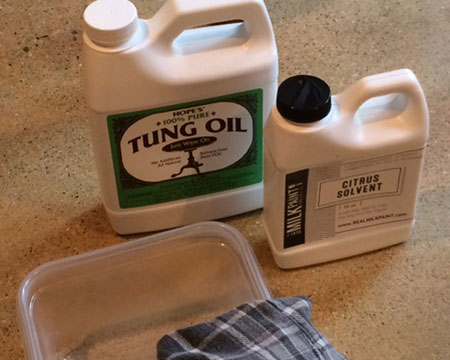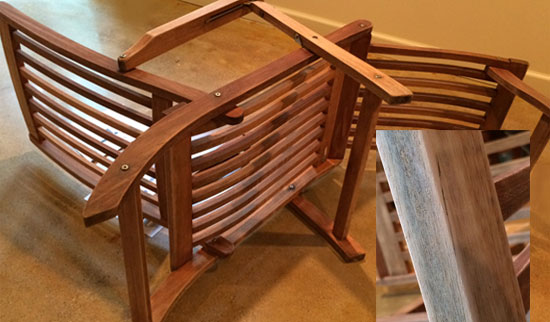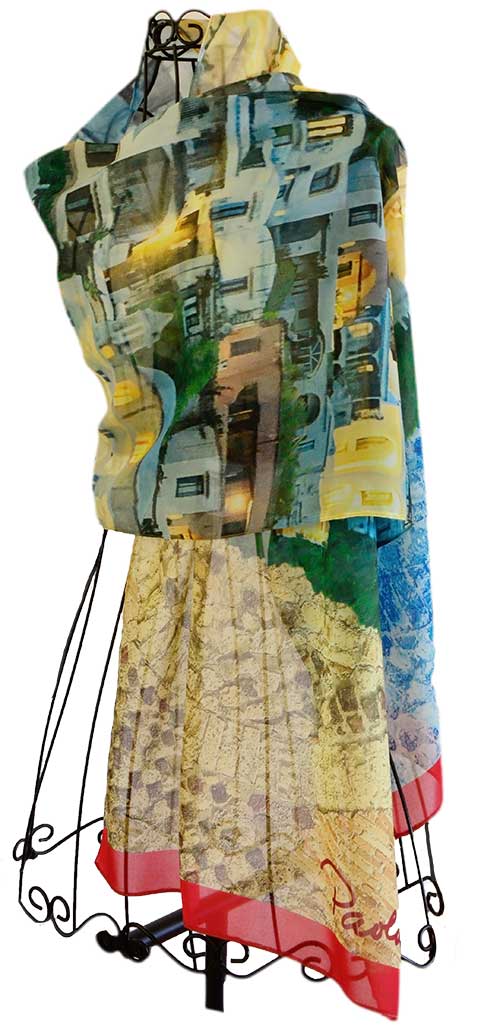Wood finishing ingredients with a seductive ring to them. For some foolish reason in updating our house, we surrounded ourselves with outdoor materials that demand protection from the elements. Mahogany decks and bamboo fencing require sun/mold protection almost every year. A wooden statue and Asian door made for tropical weather were not created for Zone 5- Connecticut. What were we thinking?
Last year we added two more items- teak deck chairs in need of re-finishing. Sheer insanity. I know it, you know it. What could make it more complicated? Sealing with natural products of course. Last year, I used a combination of Tung oil and spar varnish on the Serenity statue. I adored the look and feel of it but there was one element missing. Magical citrus solvent to thin the oil.

It’s so romantic. Tung oil, also called China wood oil, comes from the seed of the Tung tree, which grows in China and other Asian countries. It’s international and has history! It has a storied past too- used for centuries on ocean going boats because of its water resistance. Frankly, I’m tired of working with sealants that smell awful and self-combust in sun. These ingredients also allow one to get her hands in them. Of course I use gloves but I apply the oil with a small rag -the better able to rub it into the wood. If ONLY there weren’t so many little dowels.

Why use citrus solvent in lieu of turpentine? Because it smells divine, aids in absorption and is a food safe product devoid of turpentine fumes. It’s a little more expensive but I love the results, and who doesn’t love rubbing wood with oil that has the essence of oranges? As Tung oil is a drying oil, when exposed to air it hardens through a chemical reaction called oxidation. Unlike other drying oils, (linseed and soy), it won’t darken, mold or turn rancid over time. The citrus/oil blend aids saturation and hastens drying time. It’s food safe! At the same time, Tung oil also needs to be handled carefully, soaking used rags in cold water in a bucket with a lid. When we oiled the deck, we were moving too fast and had accumulated a small pile of rags. My husband smelled something and I saw smoke curling out of the basin. Yikes. Spontaneous combustion is REAL. Always dispose of used rags properly. Here’s more about that.
Aesthetically speaking, a Tung oil finish is very beautiful, bringing out the wood grain as it seals. The finished surface is soft to the touch like velvet. Some application tips for Tung oil.

My IMAC is finally almost back in commission after a hard drive crash. I hope to get back to design very soon once all the outdoor and wood refinishing is under control. BUT. I still have some scarves in stock- great gifts for friends and family. Give me a ring and you can have them within the week!
Susannah Clifford Blachly – A folksinger from Vermont. Lovely voice. After Rain More about Susannah.




Leave a Reply